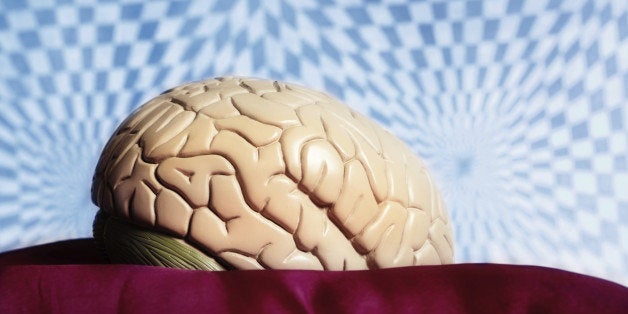
By Leah Samuel
When LSD was made illegal in the late 1960s, most laboratory research on the drug was likewise suspended. As a result, the best knowledge we've got of how the drug works comes from studies way back in the 1950s and 1960s. But now, as psychedelic drugs lose some of their research taboo, scientists are using modern brain scanners to learn what an acid trip looks like in the brain -- with an eye toward understanding more about the brain's own fundamentals.
Scientists recruited 20 healthy volunteers and, on two separate days, gave them one of two treatments: an injection of saline solution (placebo) or an injection of saline solution containing LSD. In each case, subjects laid still with their eyes closed while researchers conducted a battery of scans: two types of functional MRI (arterial spin labeling and blood oxygen level-dependent) and a magnetic imaging technique called magnetoencephalography.
Researchers saw that LSD induced dramatic changes in brain activity that seem to match up with its characteristic psychological effects. Blood surged to the brain's visual cortex. Connections within the visual cortex strengthened, and the stronger they were, the more visual hallucinators volunteers said they experienced. In other parts of the brain, connections weakened. An area surrounding the hippocampus, crucial for memory, communicated less with an area of the brain's cortex. The amount of falloff between the two correlated with how much volunteers reported losing a sense of self or sense of reality. Researchers published their findings Monday in Proceedings of the National Academy of Sciences.
Overall, the action of LSD on the brain is an "entropic" one, the researchers said: Brain areas that were siloed begin to talk to one another, while established lines of communication fall off -- a similar effect as seen in brain studies of other psychedelic drugs such as psilocybin. This might explain acid users' reported sensations of "seeing music" or "hearing colors."
And beyond that, studying LSD in the brain may allow researchers to understand how it, or drugs like it, might be used to treat certain psychiatric disorders. If, in some cases, mental illness is a result of brain behaviors becoming "automated and rigid," the researchers wrote, then psychedelic drugs, by introducing some chaos into the system, could be a promising therapy.